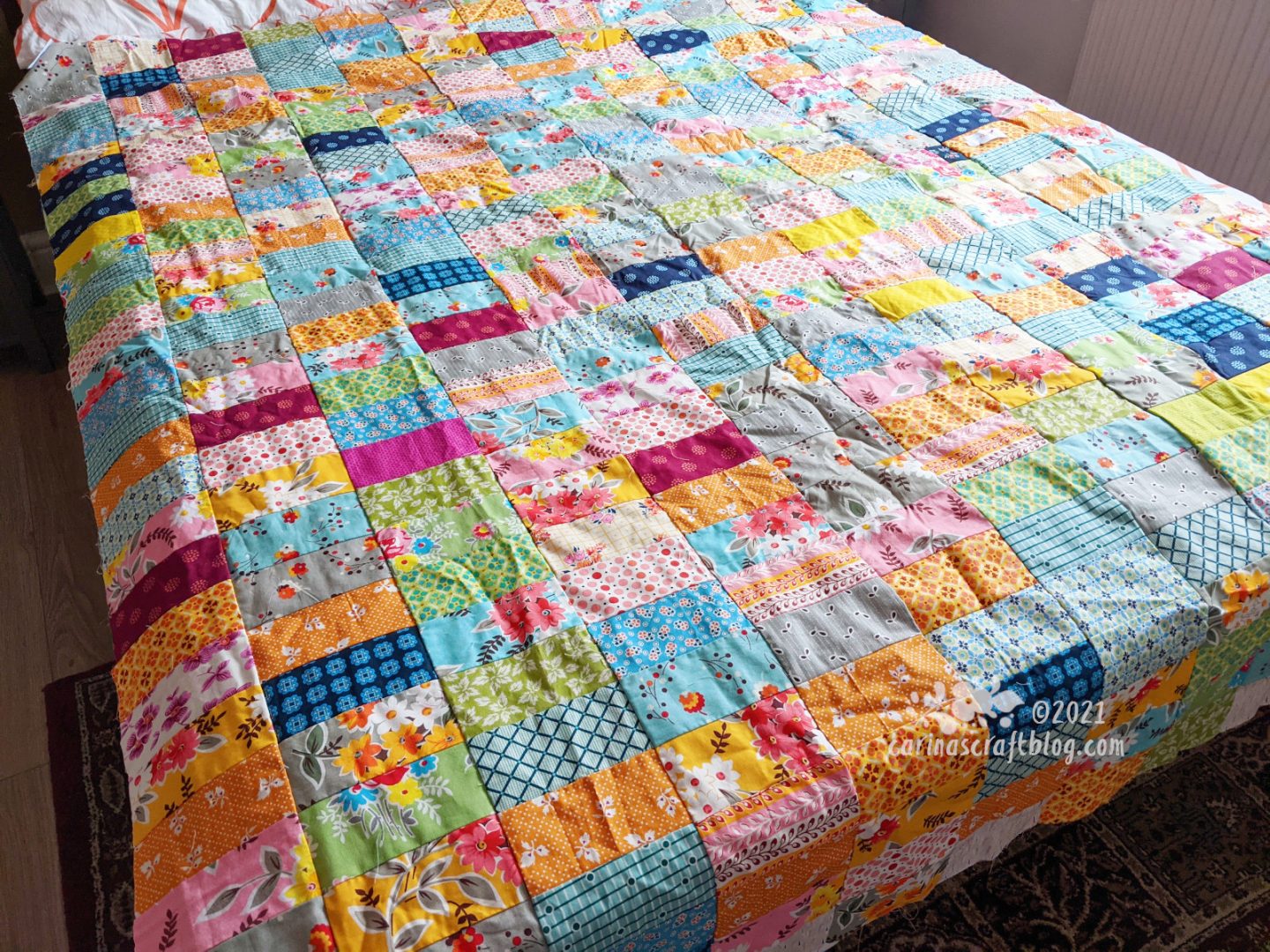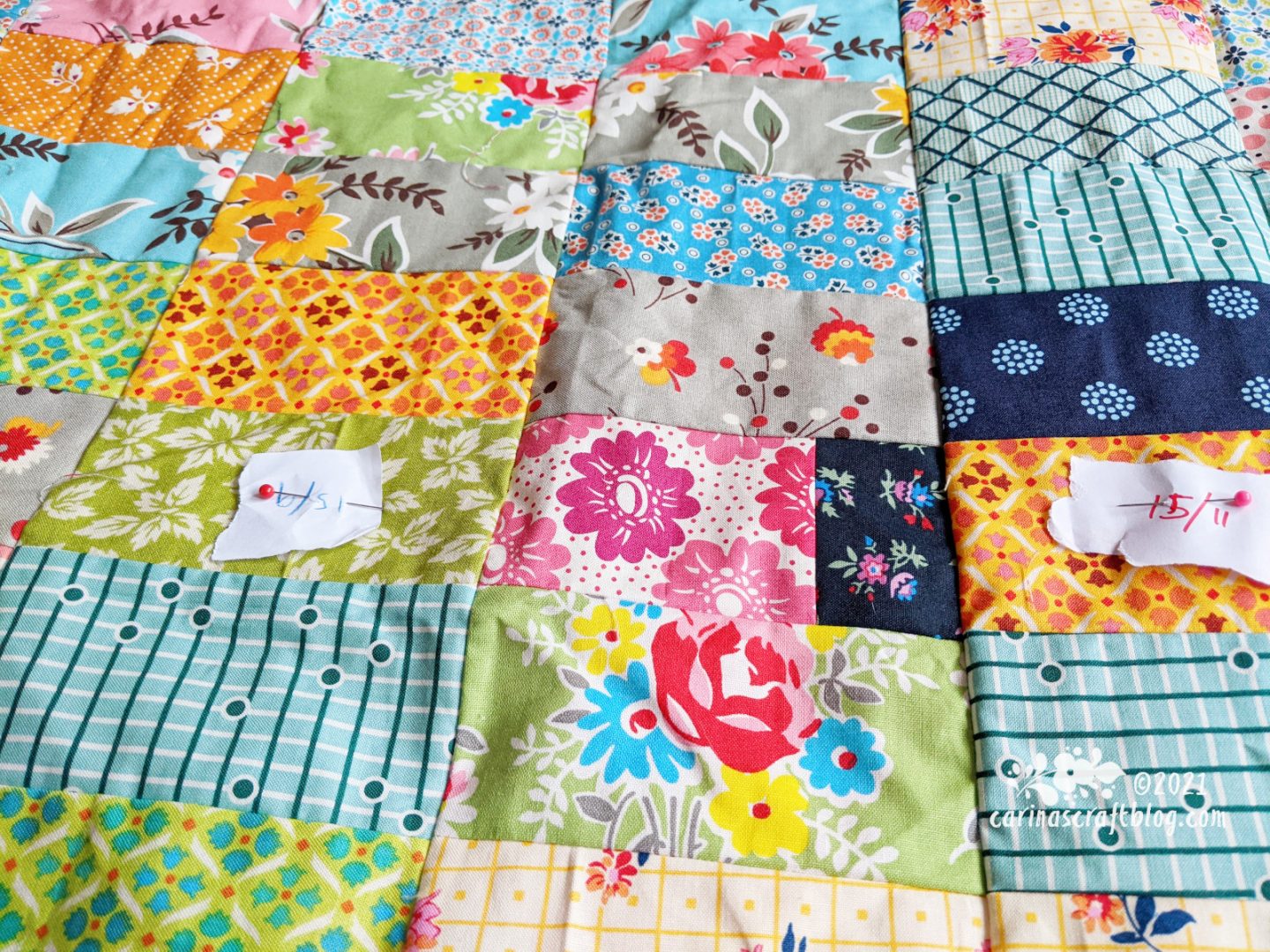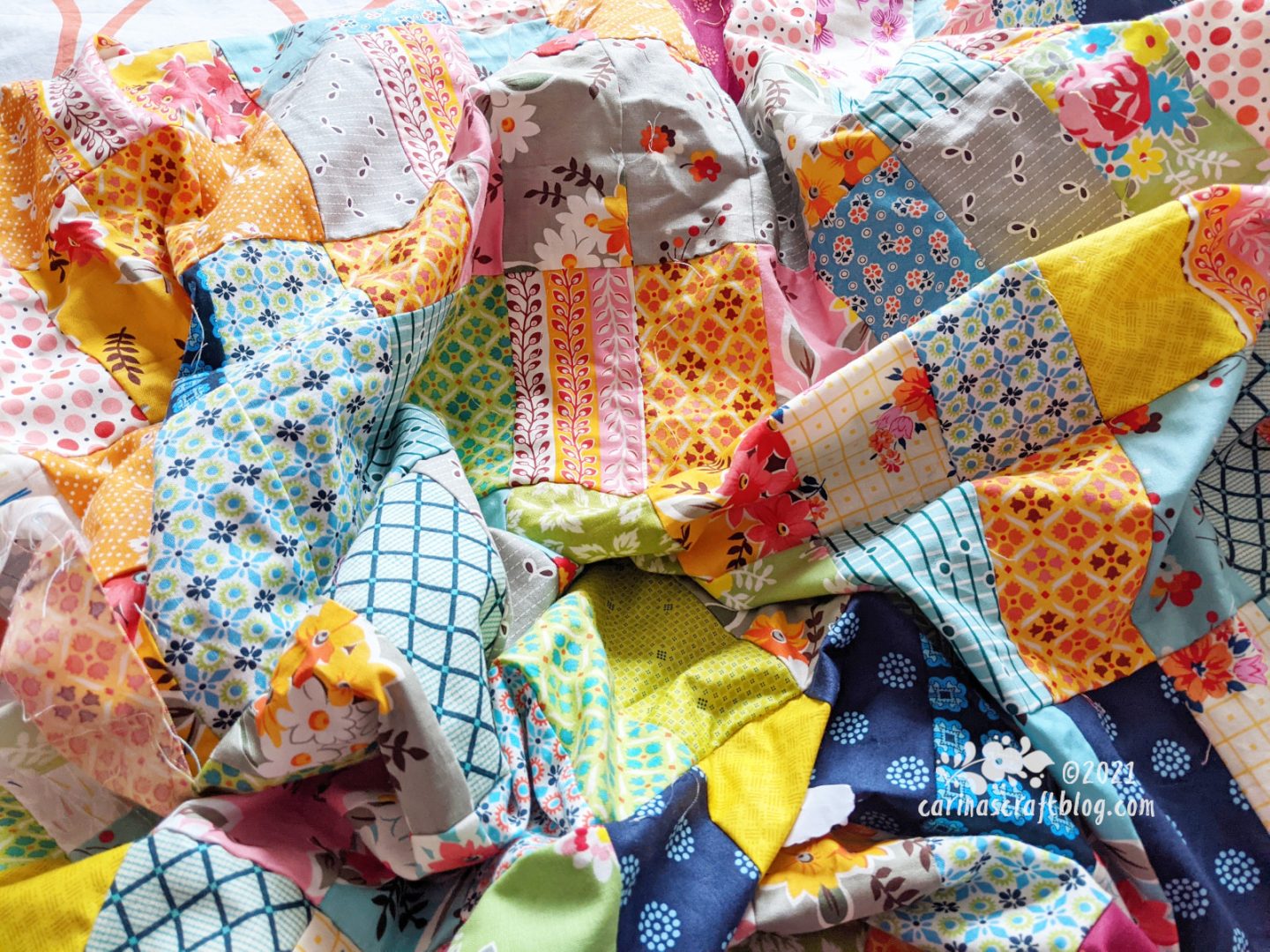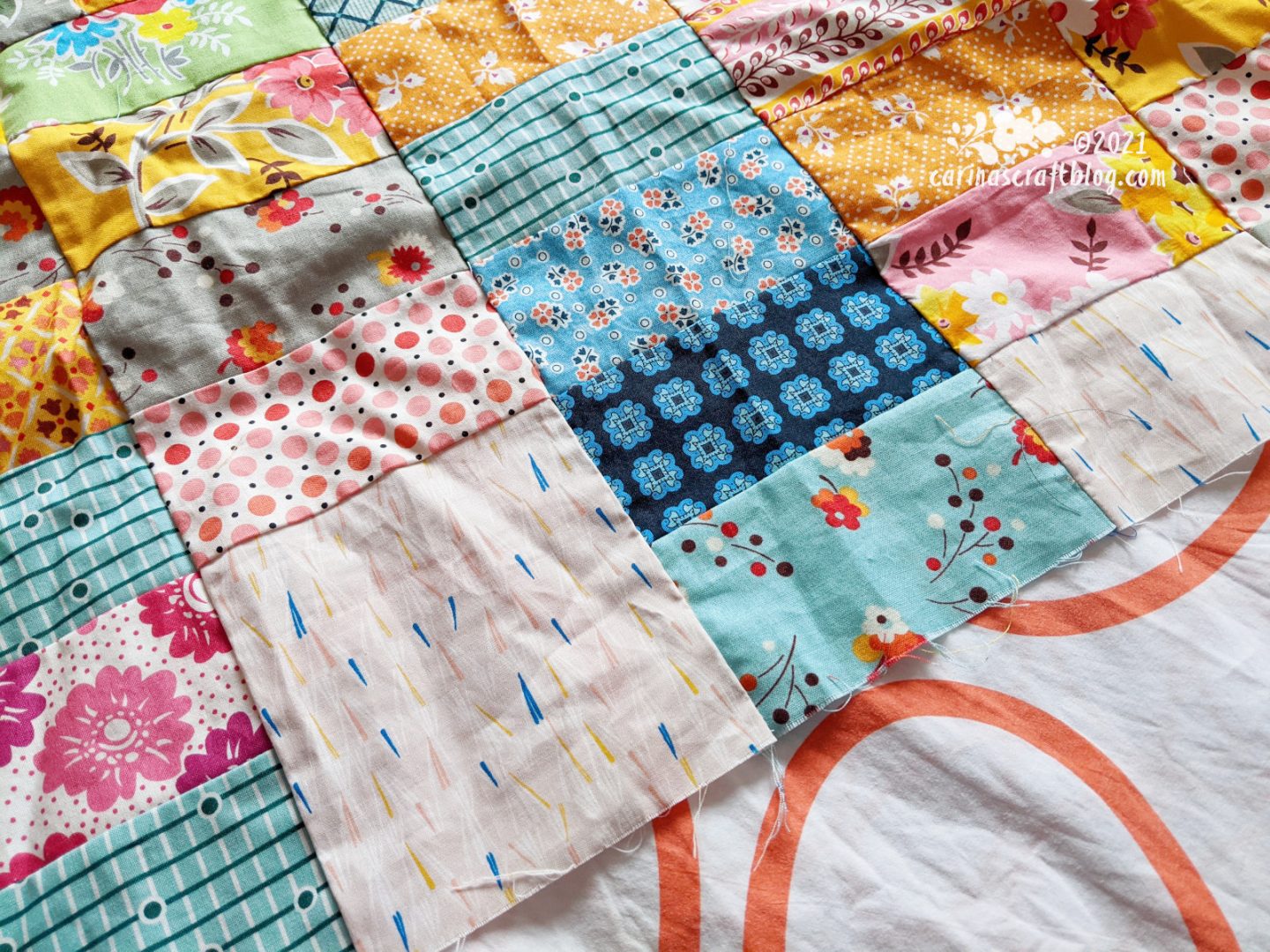
I finished the 2020 Steps quilt top on New Year’s day. It was very satisfying sewing that last column of days and finish the whole thing! But also a little sad, maybe.
I thought I would share a few tips if you want to make a similar project.
Tracking
Obviously, you will need some way of tracking your steps. I think I mentioned before that for most of the year I used my mobile phone to track my steps. But obviously that is a flawed method because you (or atleast I) don’t have your phone on you constantly. I got a step tracker in mid October and it quickly became obvious that I was actually doing atleast 1000 steps more each day than the phone was telling me. So, get a wearable step counter of some kind. Even the cheaper ones are pretty reliable. Mine cost less than £20 and does exactly what I need it to: track my steps and tell me what time it is. :-D

I marked the change from tracking with the phone to the wearable by adding a square of fabric to the day where I started using it.
You will also need a way to keep track of the steps. I set up a spreadsheet in Google Sheets and added conditional formatting so it would automatically colour in 5261 steps as yellow and 2478as grey (or whatever colour I assigned to a particular range). It was quite satisfying to see the columns fill up in the spreadsheet and make a tiny virtual quilt.
I worked on the top once or twice a month. I had originally planned on working on it every week but it was more gratifying to be able to add more blocks each time.
Fabric
For this kind of project it is difficult to say exactly how much fabric you will need. To make some kind of estimate, first decide how large you want your quilt to be. Then you can calculate the size of the blocks you will be using. I used blocks that measure 5.5″x3″ so my quilt is 60″x77.5″.
I had been tracking my steps for several months before I decided to make this quilt, so I could use that data to estimate how much fabric I would need. Or atleast which ranges would need the most fabric. So I sat down with a piece of paper and went through two or three months of step data and tallied up how many days I’d done 0-999 steps, how many days 1000+ steps, how many days 2000+ steps and so on.
Then I pulled out my collection of Denyse Schmidt fabrics and started making decisions on which fabrics I wanted to include. For some of the step ranges it was obvious that I’d need more fabric than what I had of one particular print so I decided to assign colours to some ranges. That way I could use three different grey prints* for the 2000-2999 range, for example. Or two prints for the 7000-7999 range.

During the year, I did have to add another print to a couple of the ranges, but I didn’t run out completely. I haven’t actually tallied up how much fabric I used for each range. I suppose I should consult my spreadsheet!
I think if I were to do something like this again, I would use solids so I could stick to one colour per step range. And not be worried about running out because it’s a lot easier to get hold of more Kona Dragon Fruit than a Denyse Schmidt print from ten years ago! :-)
That being said, I am glad that I did use the DS fabrics because it turned out that 2020 was a year like no other. It was nice to be working with these prints each months and it is nice to have the quilt as a good memory of that weird year.
Anyway, once I had more or less guesstimated how much fabric I would need, I spent an afternoon pre-cutting some of the blocks I knew I would probably need quite a lot of. That way I could just get on with the sewing whenever the mood struck.
*Looking at the step data from before I started the quilt, the 2000-2999 range was the most common, so I decided that I’d use my least favourite colour, grey, for that range. Hoping that it would spur me on to do more steps to avoid that boring colour! I think it worked! Hack your life with a quilt! :-)

If you are making the quilt in a similar layout to the one I used, 12 columns with 31 days each, there is another decision you will also need to make. What you will use in the gaps where the months aren’t 31 days long?
I wasn’t sure at first. I considered using another DS print, but I thought that would just sort of get lost among the others. A solid, perhaps? But no, that would stand out too much. In the end I decided on this Leah Duncan print ( the square block in the photo above). From a distance it almost looks like a solid but close up it has enough interest to not stand out too much.
Emotional quilt
As I said above, it is nice to have this quilt as a record and a nice memory from 2020. And it was nice to have it as an ongoing project last year. Something to look forward to working on each month. It was comforting to have this routine (ritual, almost) of logging the steps every night and then working on the quilt every so often.
I can highly recommend making one. Even if you’re a beginner quilter it is achievable, just stick to rectangles and squares and it will be pretty easy.
